- Author Miguel Ramacey [email protected].
- Public 2023-12-17 06:11.
- Last modified 2025-01-24 21:21.
According to the ancient chronicle, the Novgorod Icon of the Mother of God “The Sign”, now kept in St. Sophia Cathedral, was first glorified in the 12th century, and it happened during the days of a severe trial that befell the city. Since then, this image has been a symbol of the patronage of heavenly forces.
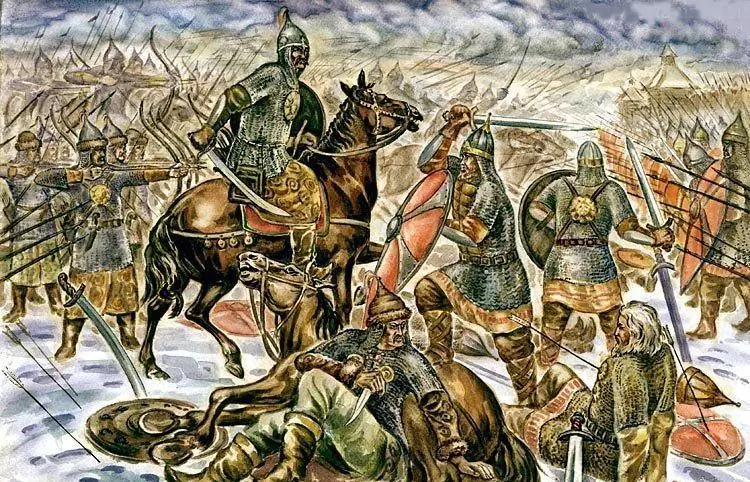
Fratricidal campaign
The 12th century entered the history of the fatherland as a period of fierce confrontation between the specific princes, who shed rivers of blood in their quest for power. One of his gloomy episodes was the attempt of the Vladimir-Suzdal prince Andrei Bogolyubsky to subjugate Veliky Novgorod. Not relying only on his own strength, he entered into an alliance with other princes: Ryazan, Murom and Smolensk, and put his own son Mstislav at the head of the united army. In the winter of 1170, this huge army moved to the banks of the Volkhov, leaving behind countless corpses and ashes of villages. At the end of February, Mstislav's soldiers approached Novgorod and began to prepare for the assault.
The Will of the Blessed Virgin Mary
Seeing that the besiegers of the greatmany, and their own strength is clearly not enough, the inhabitants of the city, relying only on heavenly intercession, prayed unceasingly, calling on the Lord and His Most Pure Mother. Many Novgorod icons by that time had already become famous for the miracles revealed through them, and this gave hope to the besieged.
And it so happened that one night, Archbishop John of Novgorod (later glorified as a saint), while standing in prayer, heard the voice of the Most Holy Theotokos, commanding him to go to the Church of the Savior, on Ilyinskaya Street, for the sake of saving the city, and, taking Her image from there, raise it to the city wall.
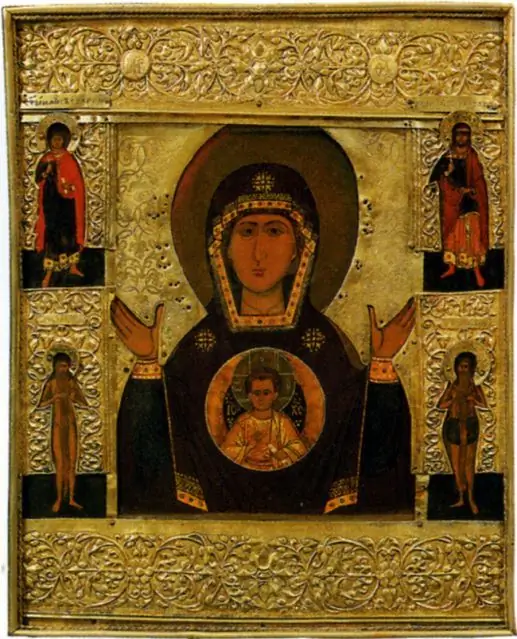
Miracles revealed by the icon
Without any hesitation, the venerable archpastor sent his servants to the indicated church, but those, returning, reported that not only could they not bring the saving image, but they even failed to move it. Then St. John gathered the people and, at the head of the procession, personally went to Ilyinskaya Street. The legend says that only after a general kneeling prayer, the Novgorod icon "The Sign" (it was she who turned out to be the miraculous image that the Mother of God pointed out) was taken up and, solemnly carried through the streets of the besieged city, raised to the wall.
Not knowing what they were doing, Mstislav's soldiers showered the marvelous image with a cloud of arrows, one of which pierced the image of the Virgin. And then those present were able to see a miracle: the Queen of Heaven turned Her most pure face towards the city, and bloody tears flowed from her eyes. At that moment, terror seized the besiegers. Deprived of reason, they drew their swords and began randomly slashing each other. Many of them then died under the walls of the city, and the survivors fled in panic.
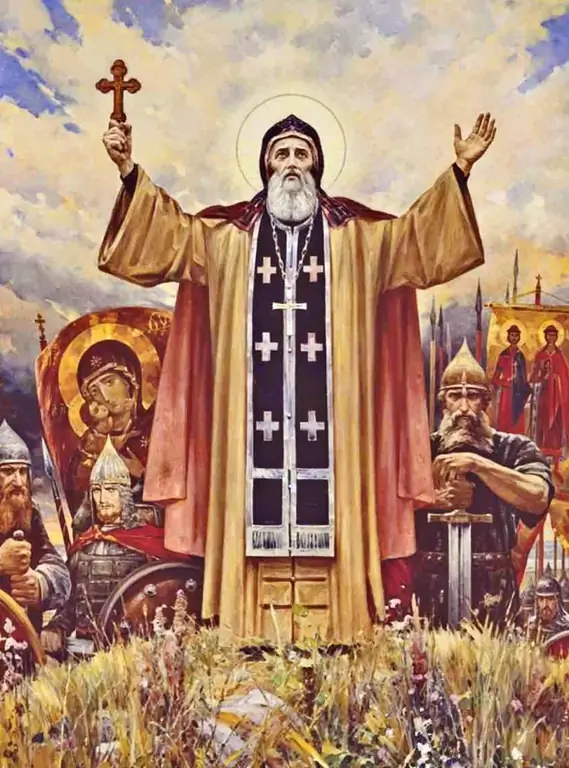
Glorification of the miraculous image
On that day, the Novgorod Icon of the Mother of God “The Sign” protected the people of Novgorod from imminent disaster and thus became famous all over the people. Soon the date of her annual celebration was established. It was February 25, the day of the happy deliverance of Novgorod from enemies. For almost two centuries, the miraculous image of the Sign stood on Ilyinskaya Street in the Church of the Savior, founded back in the 11th century by Archbishop Nikita of Novgorod. The icon was taken out only on the days of celebrations, and then returned to its place. But over time, the Novgorodians built a new stone church for their savior, and the old one was demolished due to dilapidation. Today, in its place, you can see a stone temple, founded in 1374.
Heavenly patroness of Novgorod
The history of the Novgorod icon "The Sign" keeps the memory of many miracles revealed through it. So, in 1566, she saved the city from an unprecedented fire that engulfed it. In those days, fire disasters often happened in Russia, but this time the fire raged so furiously that it threatened to destroy all city buildings. Only thanks to the procession, led by Metropolitan Macarius, carrying a miraculous image in his hands, it was possible to stop the elements.
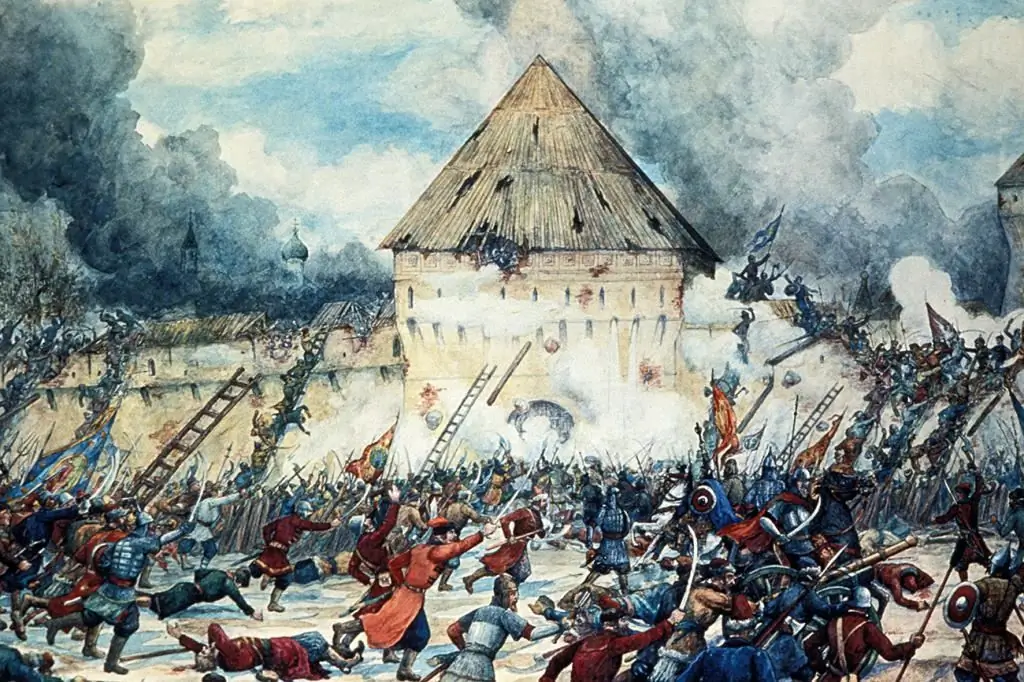
Another striking episode in history is the miracle revealed through the icon in 1611, in the days when Novgorod wascaptured by the Swedes. Wanting to rob the Church of the Sign - the very one that was specially built for the miraculous image - the invaders tried to break into it during the service, but in front of all those present they were thrown out by an unknown force. Their second attempt ended the same. Shortly thereafter, the Swedes left the city, full of fear of his heavenly patroness. There are many such examples.
The fate of the icon in the XX century
In 1934, the cathedral where the Novgorod icon "The Sign" was located was closed, and it was transferred to the local history museum, where it remained until perestroika times. Only during the Great Patriotic War, saving a valuable relic from the Nazis, Novgorodians evacuated it deep into the country. In 1991, when the government's policy towards the Church underwent a radical change, the image of the Blessed Virgin Mary "The Sign" was returned to the Novgorod diocese and has been in the St. Sophia Cathedral ever since.
Iconography of the image
In terms of its artistic features, the image of the Mother of God "The Sign" refers to the icons of the Novgorod school. On a board measuring 59 x 52.7 cm is a half-length image of the Virgin, raising her hands in a prayerful gesture. On her chest, against the background of an oval sphere, is placed the Eternal Infant Jesus, blessing the audience with his right hand, and holding a scroll in his left, a symbol of teaching and wisdom. In addition to these two central figures, the composition of the icon also includes images of St. Peter Athos and Macarius of Egypt.

This iconographic type, called "Oranta", is one of the most ancient images of the Mother of God and, as researchers believe, goes back to the image that was once in the Blachernae Church of Constantinople. It has become widespread not only in the Orthodox world, but in the churches of the Western direction of Christianity. A vivid example of this is the image of the Blessed Virgin Mary with outstretched hands in prayer and blessing the Infant, placed in the Roman tomb of St. Agnes.
In Orthodox Russia, the images of the Mother of God of this iconographic type appeared among the first. The earliest of them, dating back to the turn of the 11th and 12th centuries, were already called "The Sign", although they did not fully correspond to the icon stored in the St. Sophia Cathedral in Novgorod. The main difference was that the Mother of God was depicted on them in full growth, leaning with her feet on an eagle rug, which is a characteristic element of Orthodox hierarchal worship. As for the prayerfully raised hands and the location of the Eternal Child, they were the same as on the icon we are considering. Above is the prayer offered before this honorable manner.
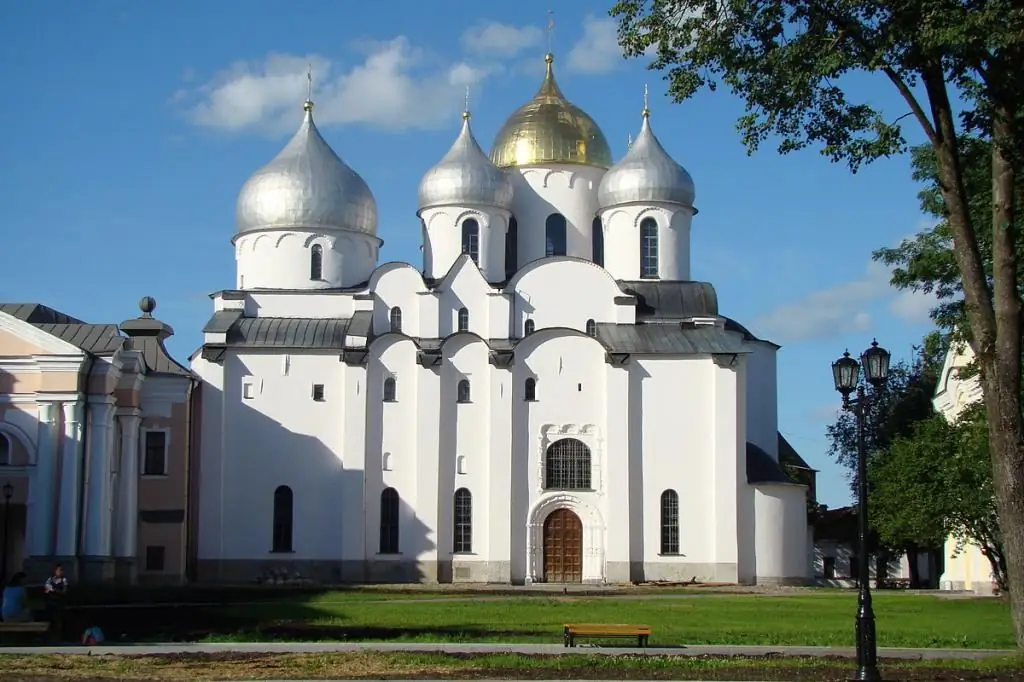
Features of the image stored in St. Sophia Cathedral
The Novgorod Icon of the Mother of God "The Sign" is two-sided. On its back is an image of Saints Joachim and Anna ─ the earthly parents of the Virgin Mary, standing inprayer postures before Jesus Christ. Another characteristic feature of the icon is the presence of a shaft, which serves to carry it out of the church during the days of religious processions.
According to the data available to art critics, in the 16th century the front side of the icon was renovated. There is reason to believe that this work was personally carried out by Archbishop Macarius, who later occupied the chair of the Metropolitan of Moscow. A detailed study of the painting layer showed that only individual fragments of the vestments of the Virgin, as well as part of the medallion, in which the figure of the Infant Jesus is placed, remained original. The reverse side, untouched by the bishop's brush, has come down to us in its original form.






